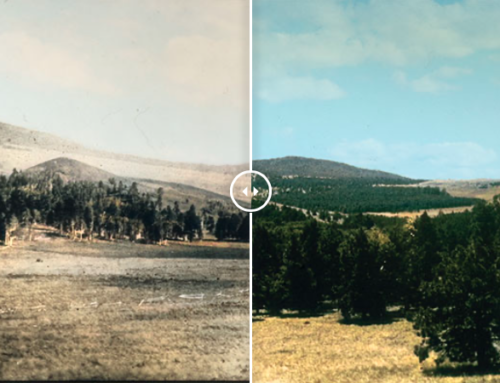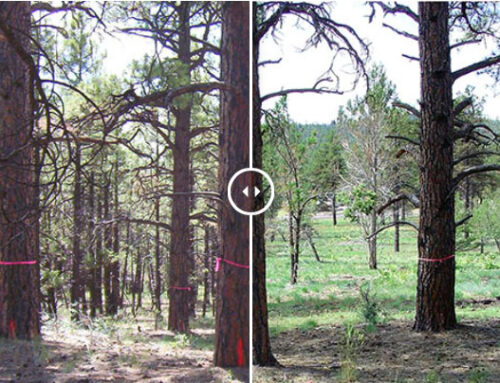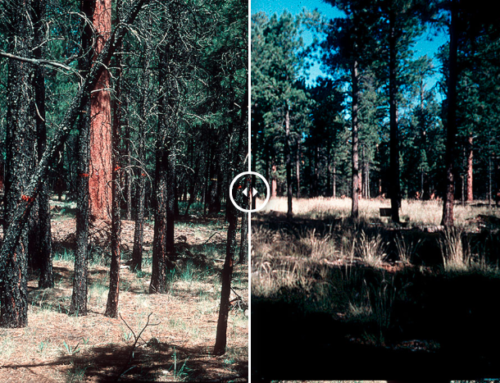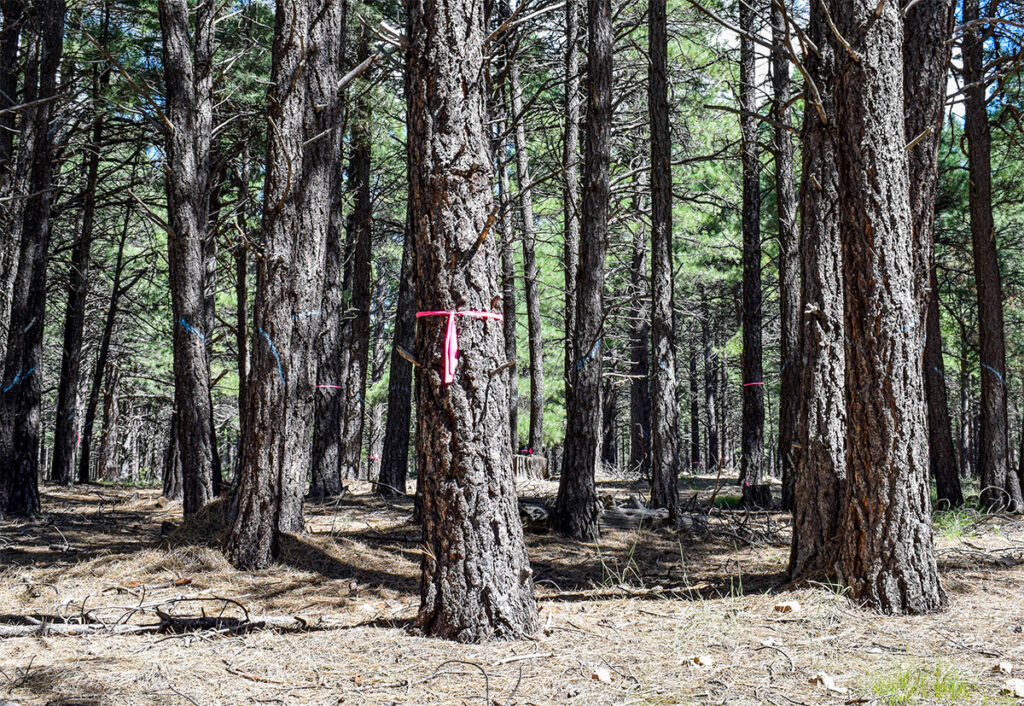
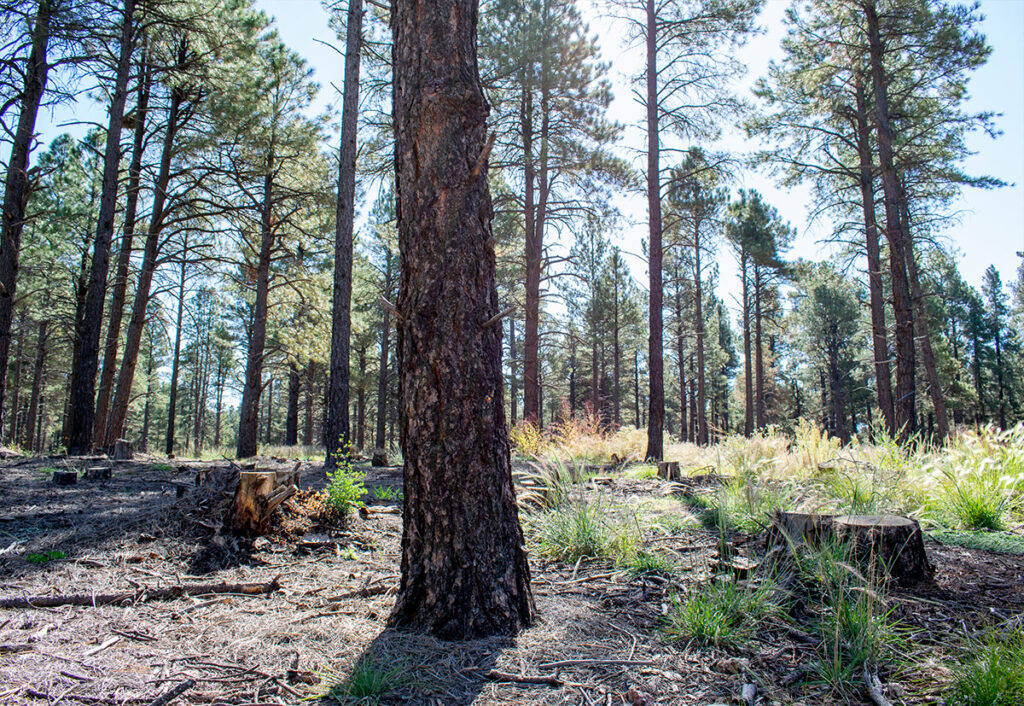
The goals of forest restoration treatments are to restore degraded forest health and to help solve the problem of unnaturally severe wildfire. Sometimes restoration can be achieved by fire only. However, where tree density and structure prohibit safe use of fire, mechanical thinning followed by prescribed fire is recommended. These treatments leave larger, mature trees and reinvigorate the understory, which includes grasses, forbs, and wildflowers. In turn, this diverse ecosystem supports wildlife habitat and reduces the threat of catastrophic wildfire.
These before and after photos show what the forest looked like before thinning operations (left; August 2017) and one year after thinning and biomass removal operations (right; September 2018). Note the increase in understory grasses, flowers, and plants in the right-hand photo. Photos were taken at a restoration demonstration site at Ft. Tuthill County Park, Flagstaff, AZ.
Related Papers
What to Expect After Restoration, Topics in Restoration and Resiliency Paper

